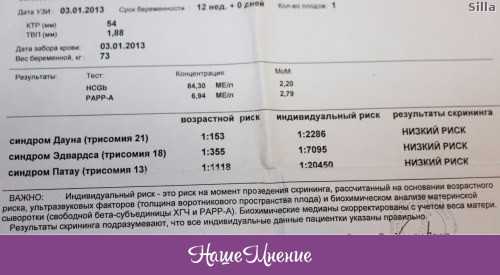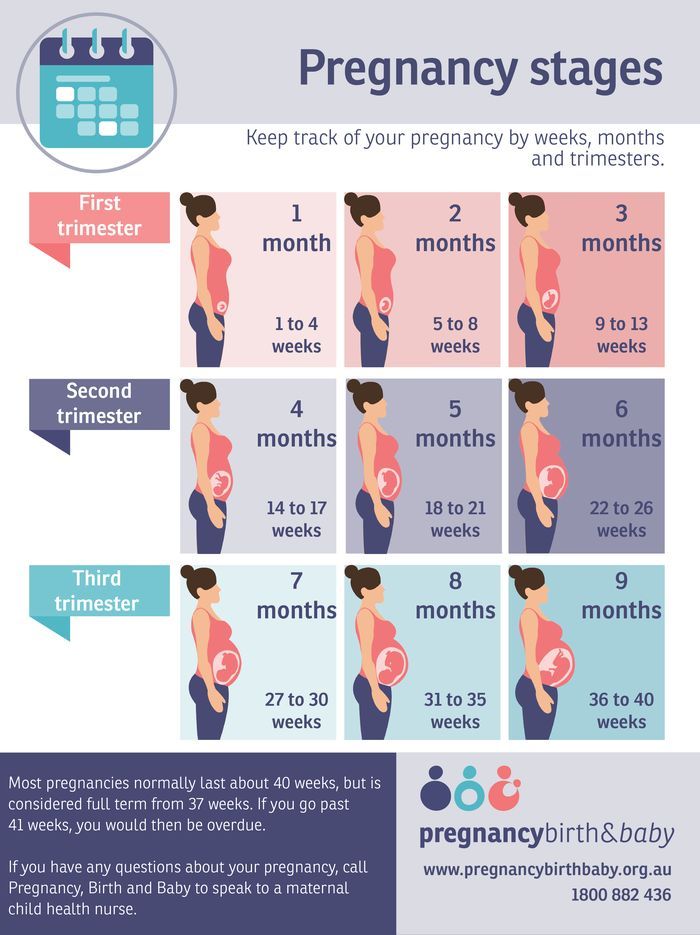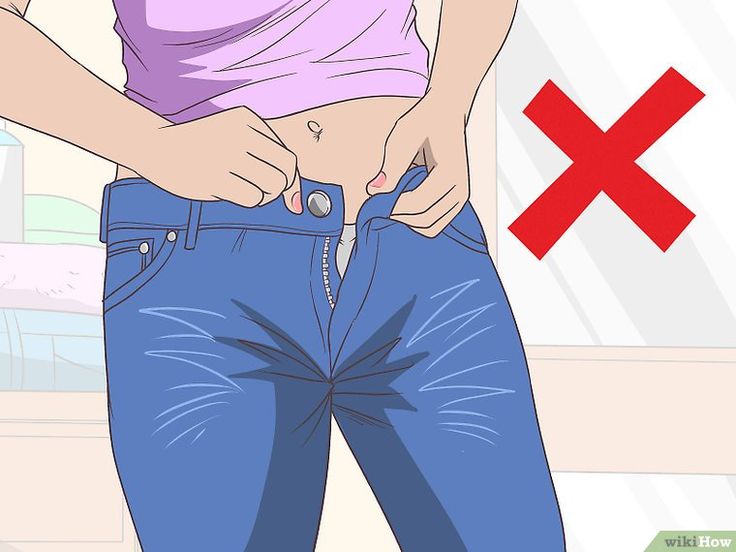After birth kegel exercises
Kegel Exercises During and After Pregnancy
You've heard Kegels mentioned from time to time, but just what are these exercises, and what do they do? These invisible exercises strengthen the pelvic floor muscles that help support your bladder, uterus, and rectum, and they are great to do both during and after pregnancy. Read on to learn about the benefits of Kegel exercises and how you can add them to your daily routine.
What Is Kegel Exercise?
Kegel exercise is a form of pelvic floor exercise that involves squeezing and relaxing muscles in the pelvic and genital areas. These muscles support the pelvic organs, including the bladder, uterus, small intestine, and rectum. Regular Kegel exercise during pregnancy and after you’ve given birth can help improve and maintain your bladder and bowel control by increasing the strength, endurance, and correct function of these important muscles. Kegels can be beneficial throughout life, and you might want to begin doing them during pregnancy or after your baby is born, when pelvic floor muscles often need to be strengthened.
The good news is that you don’t need to join a gym to train these muscles. Kegels can be done discreetly as a part of your daily routine.
Benefits of Kegel Exercises for Women
The benefits of doing Kegel exercises — especially during pregnancy and after giving birth — include:
Improved bladder control. Many women experience leaking urine during pregnancy or after having given birth. The risk increases with a vaginal delivery, as well as with having had a greater number of children. Kegels can help prevent or treat conditions like urinary incontinence — when you feel the strong urge to pee and pass urine before you can get to the bathroom, or stress incontinence, which involves leaking a few drops of urine when you cough, laugh, or sneeze.
Strengthening pelvic organ support. Vaginal childbirth is one potential cause of pelvic organ prolapse (when the uterus, urethra, and/or bowel sag down into the vagina).
 This is because pregnancy and vaginal childbirth can weaken the pelvic floor muscles, so they don't provide enough support for the pelvic organs. As part of a treatment plan, your doctor may recommend Kegels.
This is because pregnancy and vaginal childbirth can weaken the pelvic floor muscles, so they don't provide enough support for the pelvic organs. As part of a treatment plan, your doctor may recommend Kegels.Reduced risk of fecal incontinence. This is a condition that causes you to leak stool before you make it to the bathroom. Kegels can help strengthen the rectal muscles to help prevent this.
Strengthening the pelvic floor muscles during pregnancy also helps you develop the ability to relax and control these muscles in preparation for labor and birth. In the postpartum period, Kegels can help heal perineal tissues, which are stretched during vaginal birth.
How to Do Kegel Exercises
Kegel exercises are easy to do. It’s all about squeezing and relaxing the same muscles you would use to stop a stream of urine. Here’s how to do Kegels:
Find the right muscles. To do this, you can insert a clean finger into your vagina and squeeze the muscles you would use to hold in gas.
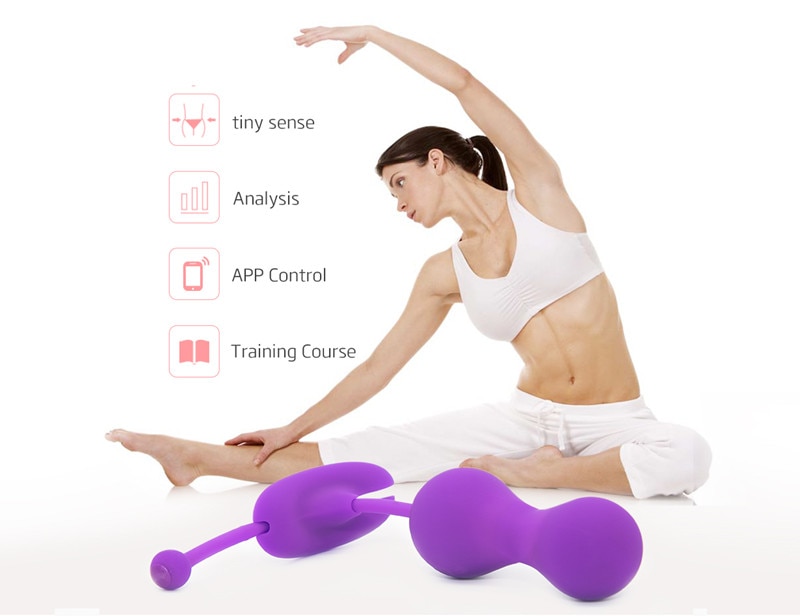 If you feel a tightening around your finger, you’re doing it right. You can also imagine you are trying to stop passing gas or trying to stop the flow of urine to locate the right muscles. If you’re still unsure, your healthcare provider can help you locate the right muscles.
If you feel a tightening around your finger, you’re doing it right. You can also imagine you are trying to stop passing gas or trying to stop the flow of urine to locate the right muscles. If you’re still unsure, your healthcare provider can help you locate the right muscles.
Get comfortable. At first, you may find it easiest to practice lying down. Later on, you'll be able to do them lying down, standing, or even while sitting.
Squeeze the pelvic floor muscles, relax, and repeat. Here are a few different Kegel exercise routines to try:
Long hold. Squeeze your pelvic floor muscles and hold for several seconds. Then relax for a few seconds and repeat. Initially, you may only be able to hold for one or two seconds, but over a few weeks, you'll gradually be able to increase the hold time by a second or two until you can hold for 10 seconds. You can try to do this 10 times in a row, but if this is too hard, start by doing fewer repetitions.
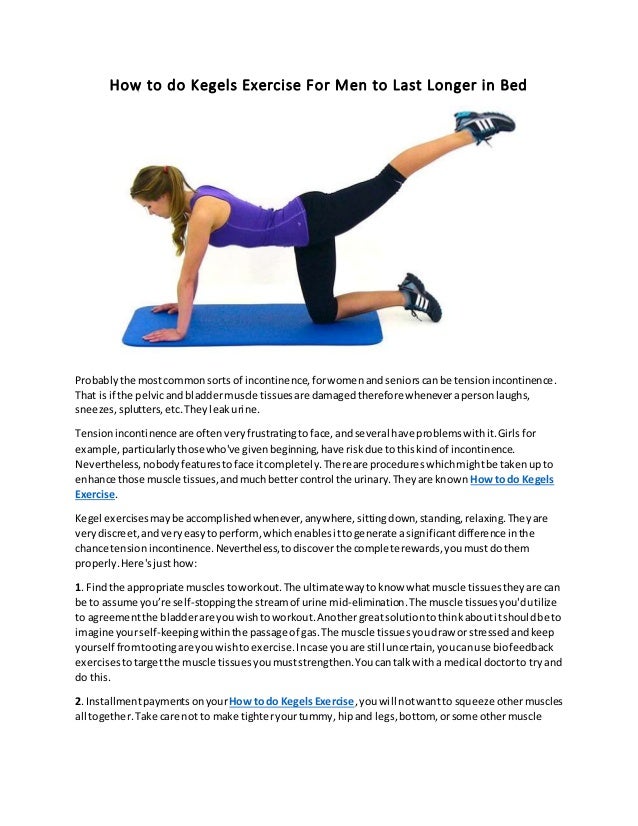 As you practice, you might feel the contraction letting go, and that's OK. Just focus on retightening the muscles. Over time, you'll notice the contraction itself becoming stronger, too.
As you practice, you might feel the contraction letting go, and that's OK. Just focus on retightening the muscles. Over time, you'll notice the contraction itself becoming stronger, too.Contract and release. Quickly tighten and relax the pelvic floor muscles several times in a row.
Hold for three, relax for three. Hold the squeeze for three seconds, relax for three seconds, and repeat.
Increase the intensity as your muscles get stronger. It's best to start small and gradually increase the number of repetitions, the duration of each squeeze, and the frequency of daily practice sessions as the muscles get stronger. Read more about when and how often to do Kegels in the next section.
As with all types of exercise, you will need to stick with Kegels and do them correctly to see the best results. Typically, women report noticing better bladder and bowel control after about 6 to 12 weeks. For continued results, make Kegels a permanent part of your daily routine.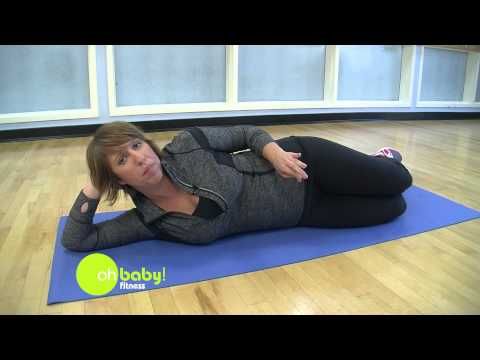
When to Do Kegels and How Often
If you are pregnant or have just had a baby, it's best to ask your provider before starting. During pregnancy, you may want to start in the second trimester, which starts at around 14 weeks pregnant. This is when many moms-to-be experience a much-needed energy boost. After your baby is born, you may be able to start doing Kegels within a few days of an uncomplicated vaginal birth — just make sure you feel ready. If you had complications during vaginal birth or had a c-section, wait until the doctor gives you the all clear.
There is no set rule on how often to do Kegels. Some experts recommend doing Kegels at least twice a week, while others recommend doing them daily. There are many options in terms of how many Kegels to do and how often. For example, your healthcare provider may suggest doing 10 sets of Kegels three times per day; doing 50 squeezes throughout the day; or practicing twice a day before increasing to three times a day. With a little practice, you'll be able to do them while you're relaxing on the couch, waiting in line at the store, or even lying in bed.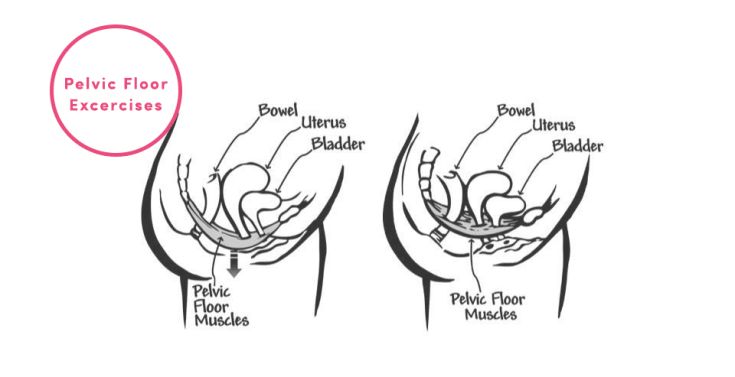 You can also contract your pelvic floor muscles before and during any situation where you might leak urine, such as when you sneeze or laugh.
You can also contract your pelvic floor muscles before and during any situation where you might leak urine, such as when you sneeze or laugh.
Tips for Doing Kegel Exercise
To get the most out of doing your Kegels, keep these tips in mind:
Don't do Kegels while peeing, as this may prevent your bladder from fully emptying.
Don't strain or hold your breath, and keep your abdominal, buttock, and thigh muscles relaxed.
Don't overdo it. After starting to do these exercises, it can be normal to feel some soreness around the pelvic area, but if you feel pain, stop and talk to your doctor.
Doing these exercises regularly is important. If you find yourself forgetting, there are apps you can download that remind you to do your Kegels and guide you through different training sessions.
Some women find contracting the pelvic floor impossible to start with, or they find it tricky to locate the right muscles. Your healthcare provider may recommend biofeedback training, which helps check which muscles are being contracted, or electrical stimulation, which uses painless electric currents to contract the correct muscles.

Kegels are your little secret — no one will ever know when you're working hard on your pelvic floor muscles. But, it can also be great for your overall physical and mental health to do other forms of pregnancy exercise, like prenatal yoga. Anything you do to keep moving and stay fit will help you prepare for motherhood!
Kegel Exercises for Pregnancy: During & Postpartum Recovery
Whether you delivered your baby vaginally, or underwent a cesarean section, the pelvic floor muscles can become weak from pregnancy.
Certainly this weakness can be exacerbated with vaginal delivery which can result in tearing of the muscles, and episiotomy.
However, you'd be surprised at how quickly you can start performing Kegel exercises postpartum.
The good news is that these muscles will heal just as any other muscles would, and they will respond to certain exercises with improved strength just as other muscles would.
The following exercise progression aims to isolate and strengthen the pelvic floor muscles following child birth. It's a steady routine but by sticking to it, you'll be back to normal in no time. You can also learn more the Intimate Rose kegel exercise weight set and how progressive resistance can improve recovery time.
It's a steady routine but by sticking to it, you'll be back to normal in no time. You can also learn more the Intimate Rose kegel exercise weight set and how progressive resistance can improve recovery time.
Postpartum Kegels Exercises to Do Immediately
1. Pelvic Floor Muscle Activation
Kegel exercises postpartum may be done within 24 hours of delivery in the hospital bed or at home in bed for those experiencing home birth. Begin lying on your back with knees bent and feet shoulder width apart.
Imagine that you are shutting off the flow of urine and squeeze your pelvic floor muscles, drawing them inward. Another helpful tip is to imagine that your urethra is a telescope and that you are pulling the telescope up and into your body. This is also referred to as a Kegel exercise.
Childbirth can result in significant stretching or tearing of the pelvic floor muscles, which can make it difficult to feel the muscles contracting (This is also a reason it's difficult to go right back to being intimate but this will also help with that!).![]() A mirror can be a helpful tool to determine whether or not the pelvic floor muscles are squeezing and drawing inward as they should be.
A mirror can be a helpful tool to determine whether or not the pelvic floor muscles are squeezing and drawing inward as they should be.
Your gluteal muscles should not be contracting, and your pelvis should remain perfectly still, not rocking or tilting.
Initially, try to hold the contraction for 3-5 seconds. Rest for 5 seconds.
Repeat 10 times. Do this 3 times per day.
Progression: After 3-4 weeks post-partum, progress this towards a 10 second hold for each repetition.
2. Abdominal Muscle Activation: SHHHHHHH
Begin by lying on your back with your knees bent and feet firmly planted hip distance apart as in the previous exercise. Place your hands over your lower belly.
Inhale through your nose and relax your body, then contract your pelvic floor muscles as if shutting off the flow of urine, then exhale through your mouth by saying SHHHHHHHH, making the sound of a tire losing air, thus gently compressing your abdominals downward.
Your hands should feel your abdominal muscles gently tensing and pulling downward gently.
Repeat 10 times. Do this 1 time per day.
8 Week Postpartum Exercise Map
1. Pelvic Brace Exercise:
This postpartum Kegel combines the pelvic floor and abdominal contraction exercises. Begin lying on your back with knees bent and feet hip width apart.
Find a neutral pelvic and low back alignment by gently rocking your pelvis until you find a position that is pain free and allows a slight window of space between the low back and the floor.
Ideally the pelvis will be perfectly flat on top and parallel with the ceiling, although some people with well developed gluteal muscles will find that their pelvis slopes downward slightly which is fine.
Inhale through your nose, then exhale while simultaneously contracting your pelvic floor muscles and very gently contracting your abdominals downward as if you were zipping up a jacket that is one size too small.
This activation pattern forms a “pelvic brace. Hold 5 seconds. This bracing contraction should also be done when lifting your infant, or performing maneuvers such as placing the baby in the crib or car seat.
Repeat 10 times. Do this 2 times per day.
2. One Leg fallout:
Begin lying on your back with knees bent and feet planted shoulder width apart. Contract your pelvic floor muscles and gently draw in the abdominals. Then, slowly bring one knee out to the side approximately 45 degrees, then slowly bring it back up to starting position maintaining the Kegel the entire time the leg is moving.
The primary intention of this exercise is to keep the pelvis and low back still, thus challenging the core muscles to stabilize the pelvis while the leg is moving.
Repeat 5 times on each side. Do this 2 times per day.
3. Bridge:
Begin lying on your back with knees bent and feet planted shoulder width apart. Contract your pelvic floor muscles and abdominals. Then lift your hips gently off the floor without rocking your pelvis.
Contract your pelvic floor muscles and abdominals. Then lift your hips gently off the floor without rocking your pelvis.
Pause, then gently set your hips back down onto the floor, maintaining the Kegel throughout the entire movement. .
Repeat 10 times. Do this 2 times per day.
Kegel Exercises After Birth 12 Weeks
Once the previous postpartum Kegel exercises become easier and your pelvic floor muscles have healed, you may progress basic Kegel exercises by adding an Intimate Rose Vaginal weight.
To find the proper weight to exercise with, begin by placing the white vaginal weight into the vagina as you would a tampon. Stand up and attempt to hold the weight inside the vagina for 1 minute.
If this can be easily achieved, attempt to walk around doing chores in your home with your clothing on as you normally would with the weight inserted for 20 minutes.
If this can be achieved quite easily, attempt to do this with the next heaviest weight on a subsequent day.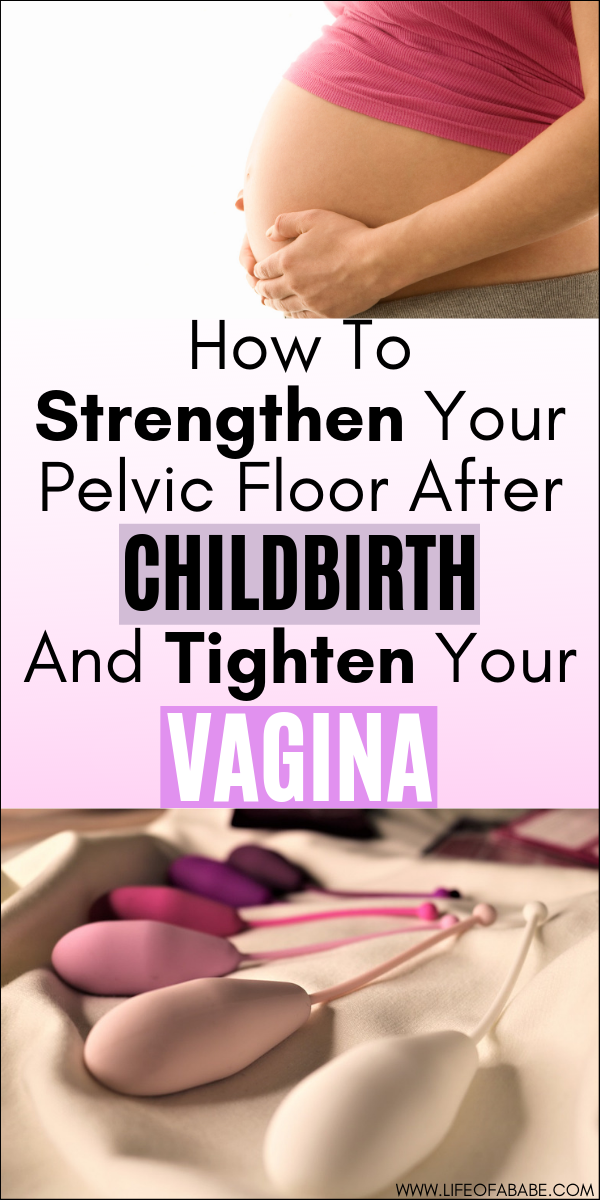 If the weight falls out into your underwear, go back down to the previous weight that you were able to maintain for 20 minutes, and use that weight to perform the aforementioned Kegel exercises described in the pelvic brace exercise.
If the weight falls out into your underwear, go back down to the previous weight that you were able to maintain for 20 minutes, and use that weight to perform the aforementioned Kegel exercises described in the pelvic brace exercise.
Once the exercises feel quite easy in the lying down position, you may attempt to progress to the next weight level, and perform regular household activities for 20 minutes. Do this 3-5 days per week. Get started with the Intimate Rose vaginal weight system.
16 Weeks Postpartum Exercises
Use the Kegel maneuvers with Intimate Rose Kegel weight set to perform more progressive strength exercises. Use a weight that can be easily worn for 20 minutes of mild activity.
Standing Kegel:With the weight in, stand up tall with good posture, feet standing hip width apart.
Inhale and relax. Then exhale, and simultaneously do a Kegel, holding the Kegel while exhaling for 5 seconds.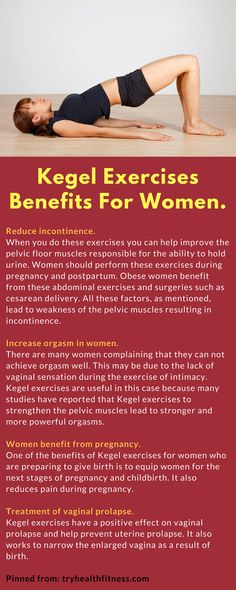 Inhale and relax. Repeat 10 times.
Inhale and relax. Repeat 10 times.
Standing Heel Raise Kegel: Stand at your kitchen counter for support with vaginal weight in.
Inhale and relax. Exhale and simultaneously do a Kegel and slowly raise up onto the balls of your feet and then come back down with control.
Once your feet are flat on the floor again, inhale and relax the pelvic floor, then exhale and repeat. You should feel the Kegel throughout the entire process of raising up onto the toes and lowering back down. Repeat 10 times.
Mini Squat Kegel: Stand at your kitchen counter for balance and support with the vaginal weight in.
Inhale and relax. Exhale and simultaneously do a Kegel, then bend your knees to approximately 45 degrees while pressing your hips backward as if you were going to sit in a chair. Maintaining the Kegel, return to standing.
The Kegel and the gentle exhale should be maintained throughout the entire duration of movement.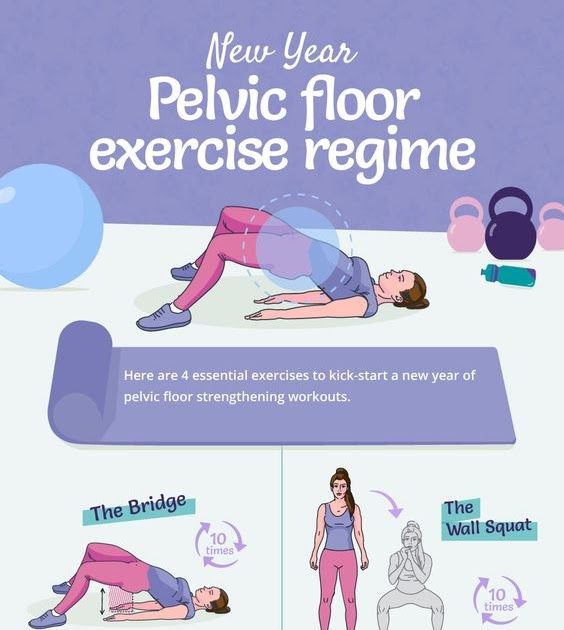 Once you return to standing, inhale and relax. Repeat 10 times
Once you return to standing, inhale and relax. Repeat 10 times
These are just a few of the postpartum Kegels that can be done after giving birth to help with recovery and some of the side effects a women may experience. Remember, it's important to listen to your body and don't overdo it. That's why we suggested certain Kegels at the 12 week and 16 week marks.
By Dr. Amanda Olson, DPT, PRPC
Kegel exercises after childbirth: rules for performing
Daria Tikhonova Practicing obstetrician-gynecologist and reproductologist, ultrasound doctor Reading time
As the heroine of the famous film said about her birth: “Try to push something the size of a pumpkin through a hole the size of a lemon!” Naturally, after such a process, the organs directly involved in it cannot remain in their former form.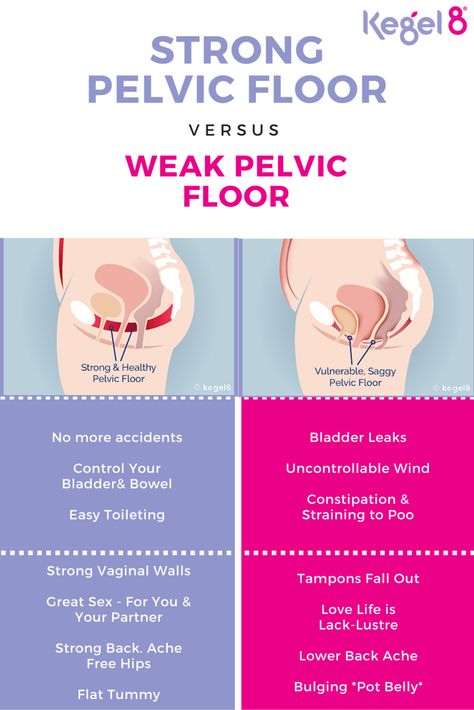 Any woman wants them to return to her as soon as possible, or at least get closer to the desired parameters and sensations. The gynecologist Kegel will come to the rescue, who developed the legendary method of strengthening the muscles of the pelvic floor. Kegel exercises after childbirth - something that every girl needs.
Any woman wants them to return to her as soon as possible, or at least get closer to the desired parameters and sensations. The gynecologist Kegel will come to the rescue, who developed the legendary method of strengthening the muscles of the pelvic floor. Kegel exercises after childbirth - something that every girl needs.
Kegel muscles - where are they?
This is a complex of muscles, designed by nature for intimate processes, therefore, in ordinary everyday events of life, they are little involved and practically not felt. But their loss of elasticity will immediately affect the quality of life. After childbirth, this is felt especially acutely. This group includes muscles that support the organs of the small pelvis:
- internal genital organs;
- bladder;
- rectum.
Their location is between the pubic bone and the coccygeal bone, and not only labor activity, but also sexual relations, as well as such a vital process as getting rid of waste products of the body, depend on their tone.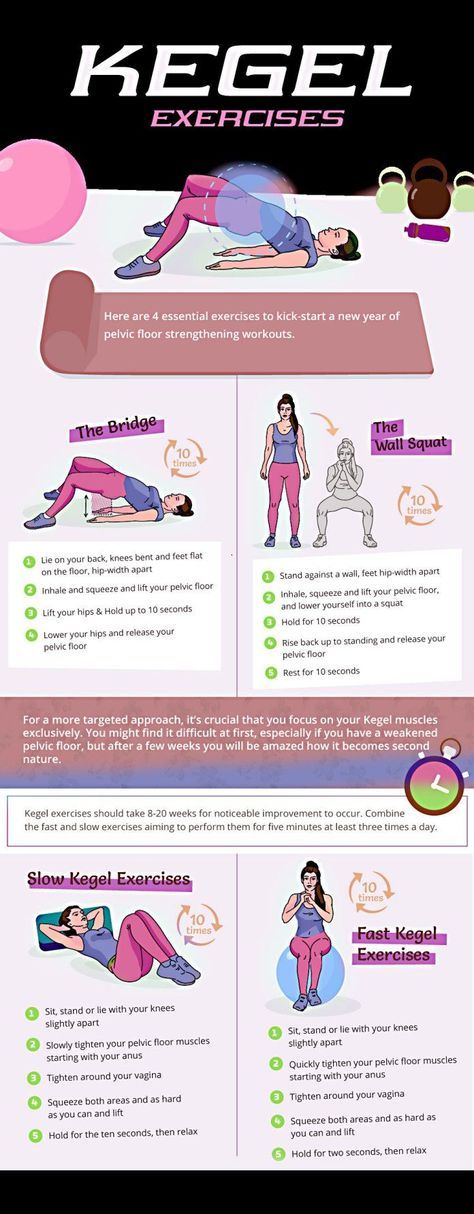 Important reasons to pay attention to them, right?
Important reasons to pay attention to them, right?
What problems can Kegel exercises help with after childbirth?
Gymnastics, which strengthens the muscles of the perineum, is useful not only for those who have recently given birth, but also for all healthy women and even men. Its role in the postpartum period is especially relevant. Correct and regular use of Kegel exercises for women after childbirth contributes to:
- prevention of blood stasis, the fastest cleansing of the uterus;
- contractions of the uterus, its return to its original state;
- restoration of elasticity of tissues stretched during pregnancy and childbirth;
- pelvic prolapse, incontinence problems;
- speedy return and maintenance of libido at a bright level;
- improve the quality of sexual intercourse;
- reduce the risk of inflammation.
Postpartum Kegel exercises are easy to do at home and take no more than 10-15 minutes to complete.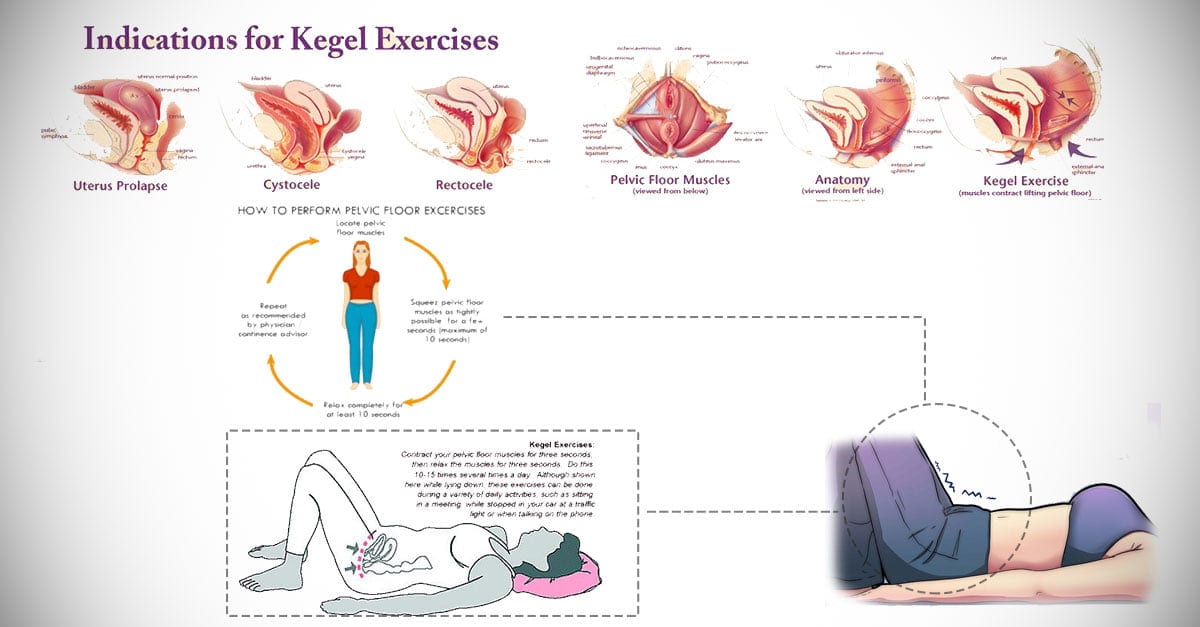
Kegel exercises after childbirth: when is it possible and who is not allowed?
New mothers concerned about when to start Kegel exercises after childbirth? Almost immediately, as such a desire appears, if there were no gaps and everything went naturally. Good health and the absence of pain and discomfort is an excellent criterion for starting classes.
Step-by-Step Online Postpartum Recovery Program
And in 3 months or less, you will not only be back in shape, but also in peace of mind. Happy mom, happy family!
- Yoga and cardio after EP or CS
- Consultations with experts
- Nutrition program
- Psychological support
- SPA: Beauty rituals at home
- Life hacks and podcasts
Start now! The first 3 days are free
It is believed that Kegel exercises are absolutely harmless. But where it comes to a woman in labor, one must act very carefully and prudently, because the effect on the pelvic floor muscles as a result of Kegel exercises after childbirth is quite active. Doctors warn of a number of contraindications for postpartum uterine contraction exercises.
Doctors warn of a number of contraindications for postpartum uterine contraction exercises.
- If the inflammatory process has become aggravated in any organ of the small pelvis, these muscles cannot be trained. Cystitis, urethritis, vaginitis, etc. - not an exception.
- After a caesarean section, suturing or other surgical procedure, the surgical incisions must first be allowed to heal completely. The concept of "completely" should be defined only by a doctor.
- If you have a miscarriage or a premature delivery, it is too early to load the perineum with additional exercises.
- For women with oncology and cardiovascular problems, the Kegel method is contraindicated.
But breastfeeding is not a contraindication at all, only it is better to choose the time of exercise after the baby has eaten.
Kegel exercises after childbirth: how to do it right?
Before you start recovery, you need to feel these muscles. A description and even a picture will not help much here: physical sensations take precedence.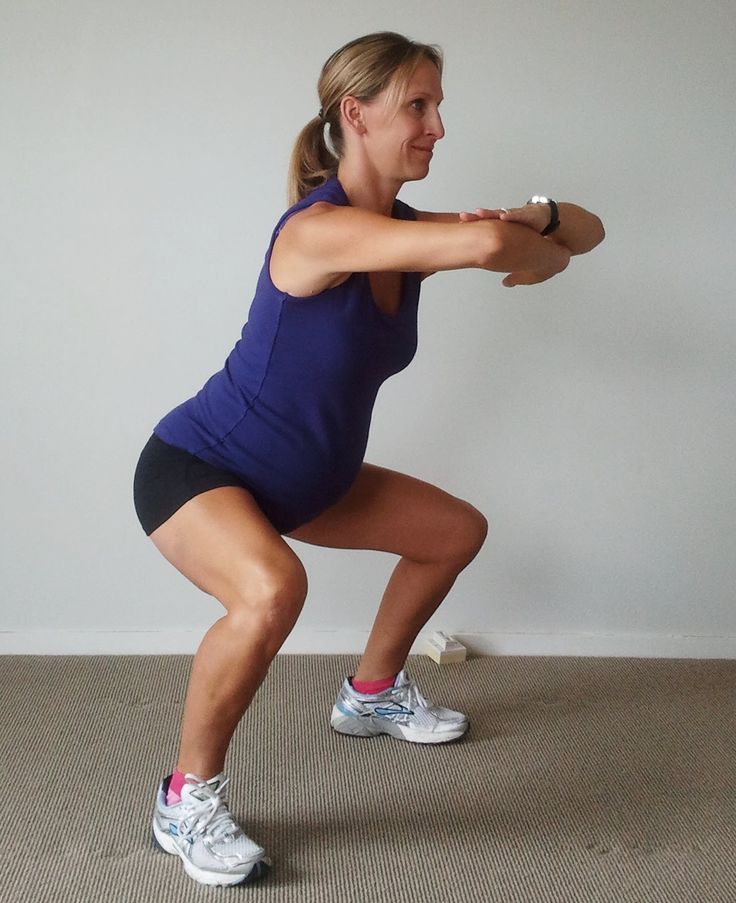 Kegel muscles are easiest to spot when… sitting on the toilet. If you interrupt the stream during urination, they are activated. Obviously, they are also felt during orgasm, but immediately after childbirth, this will have to wait a bit. There is another way to look for the “lower push-up”: in the prone position, you should bend your legs, keeping your feet on the floor, and then insert two fingers into the vagina and try to squeeze them. The right muscles will work. And now let's make them "pump up" a little.
Kegel muscles are easiest to spot when… sitting on the toilet. If you interrupt the stream during urination, they are activated. Obviously, they are also felt during orgasm, but immediately after childbirth, this will have to wait a bit. There is another way to look for the “lower push-up”: in the prone position, you should bend your legs, keeping your feet on the floor, and then insert two fingers into the vagina and try to squeeze them. The right muscles will work. And now let's make them "pump up" a little.
- Breathing should be calm and should not be delayed or forced. The bladder should not bother - empty it before starting classes.
- Beginners should start from the supine position, then you can move on to more "advanced" levels - sitting or standing. Do not tense your abdominal muscles.
- You need to eat at least. Than 1.5 hours before class starts.
A set of Kegel exercises for women after childbirth
- "Interrupted stream" - a pause in urination during daily trips to the toilet, you can interrupt the stream up to 5 times in one act.
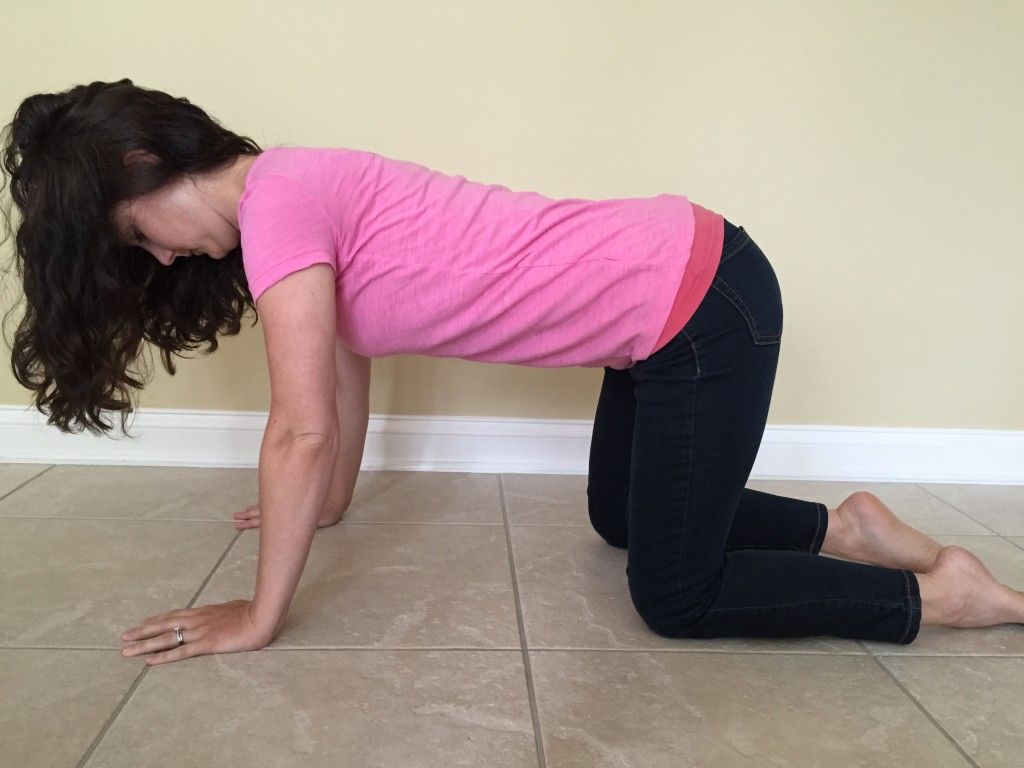
- "Fix" - squeeze and fix the vaginal muscles for 3-5 seconds, gradually lengthen the moment of fixation. Do 10 repetitions.
- "Pulsation" - tension and relaxation of the muscles of the vagina, 1 per second. For starters, 30 repetitions, then you can bring it up to 100.
- "Lift". Lying on your back, you need to focus on your feelings, it is better to close your eyes. The vagina is an "elevator" of several floors, and the woman imagines how she "rises" (strains her muscles), "stopping" on each floor for 3-5 seconds, and then increasing pressure - "rising" higher. Then comes the “elevator descent” - a gradual relaxation of the muscles.
- "In the rhythm of SOS". Lying on your back with bent legs, the muscles of the perineum contract according to the principle of "three dots - three dashes - three dots", that is, three times strongly and quickly, then three times slowly and lingeringly. Start with 10 repetitions.
2-3 months after birth, elements of Kegel exercises can be included in other sports and even household activities.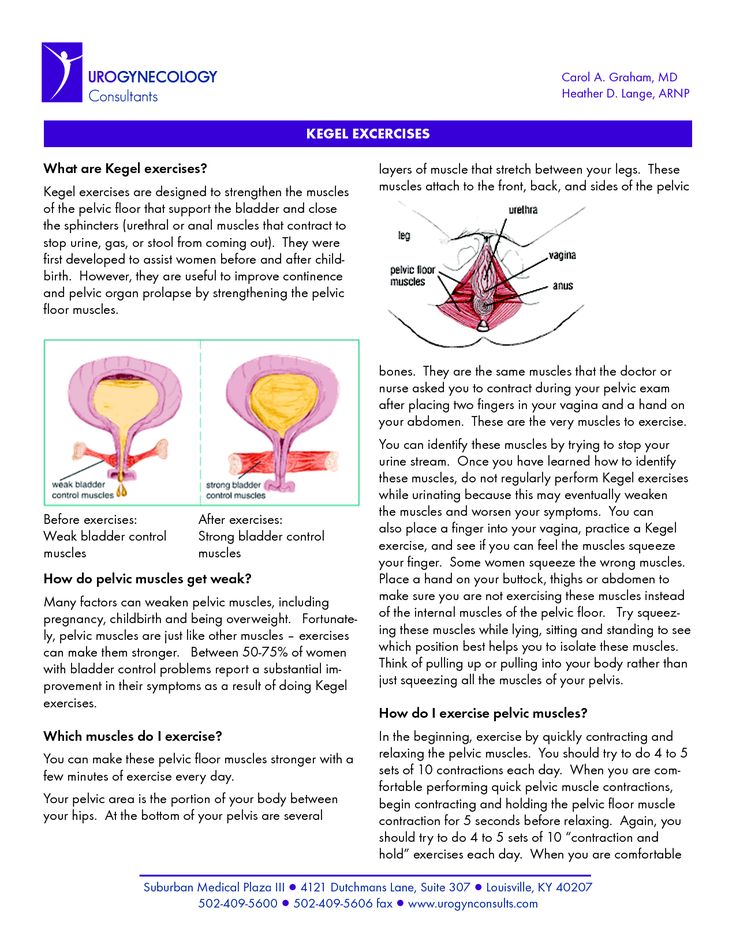
Not just Kegel
Despite all the benefits and effectiveness of Kegel exercises for recovery after childbirth, it is still not a panacea. The entire body of a woman, and not just certain organs, took part in childbirth. The load was received not only by the muscles of the pelvic floor: for natural reasons, the muscles of the abdomen and back became weaker. In order for recovery to be harmonious and really have a positive impact on a woman's health, it must be comprehensive. That is why you should pay attention not only to the Kegel zone, but to the whole body as a whole, and yoga elements are best suited for this. During the recovery course, we “teach” the pelvic floor muscles to work actively in everyday life, and not just during special exercises.
Programs
training and nutrition programs
for women
Training and nutrition programs in your smartphone!
Download the app and get 7 days of free use
Sex after childbirth: training intimate muscles
These muscles are often referred to as the intimate muscles.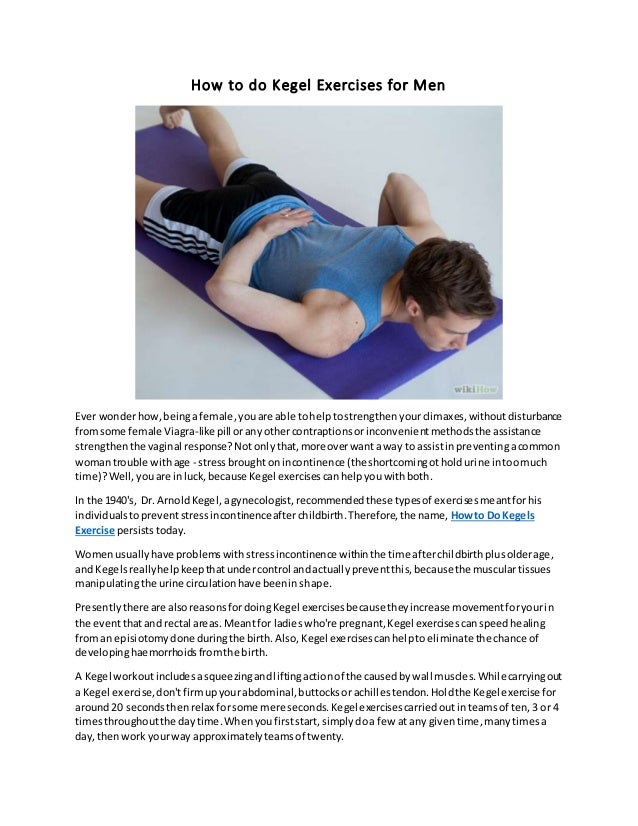 Well-developed pelvic floor muscles are the key to sexual pleasure: their volume and tone affect the degree of closure of the genital gap and, accordingly, the strength of arousal and orgasm. But very often after pregnancy and childbirth, these muscles weaken and lose their tone. Why is this happening?
Well-developed pelvic floor muscles are the key to sexual pleasure: their volume and tone affect the degree of closure of the genital gap and, accordingly, the strength of arousal and orgasm. But very often after pregnancy and childbirth, these muscles weaken and lose their tone. Why is this happening?
NO MOTION
“Almost half of the women leave the maternity hospital with weakness of the pelvic floor muscles (and even more if it is a second birth), says gynecologist Elena Silantyeva. - After all, the muscles of the pelvic floor, like all striated muscles, develop only in work, in active movement. But what kind of life do we lead? Most often - sedentary, which is why the muscles are inactive and atrophy. And during childbirth, when the birth canal is stretched, these flaccid muscles are more quickly stretched and injured. For this reason, a woman may experience a syndrome of "wide vagina" (vaginal relaxation).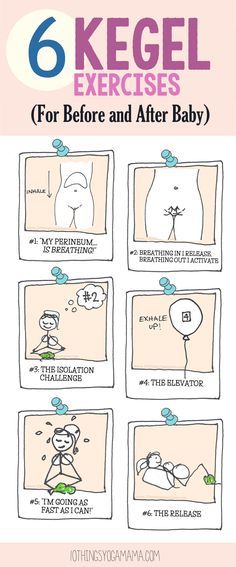 An infection easily penetrates into a wide open genital slit, thrush, colpitis or vaginitis may develop. And close contact of the vaginal mucosa with linen leads to its drying and partial atrophy. It is not surprising that the sensitivity of the mucosa as an erogenous zone is reduced. Moreover: during the love act, there is no tight fit of the partner's penis to the inner walls of the vagina. And as a result, not only the woman herself ceases to feel any pleasure during contact, but also the man (especially the elderly one): after all, the strength of his erection largely depends on the degree of fit.
An infection easily penetrates into a wide open genital slit, thrush, colpitis or vaginitis may develop. And close contact of the vaginal mucosa with linen leads to its drying and partial atrophy. It is not surprising that the sensitivity of the mucosa as an erogenous zone is reduced. Moreover: during the love act, there is no tight fit of the partner's penis to the inner walls of the vagina. And as a result, not only the woman herself ceases to feel any pleasure during contact, but also the man (especially the elderly one): after all, the strength of his erection largely depends on the degree of fit.
HEALING ORGASM
Weak sensitivity of the erogenous zones leads to another serious problem: a woman can experience a pronounced sexual desire, but cannot get an orgasm. And it's pretty bad for her reproductive system. After all, an orgasm not only gives pleasure and provides emotional release, but also supports women's health. “Orgasm causes an instant spasm of the smallest vessels of the arterial bed, blood renewal, an increase in the tone of the venous system,” explains Elena Silantyeva. - If discharge does not occur, then the outflow of venous blood slows down and congestion develops in the vessels of the small pelvis, which manifest themselves later in various painful sensations. And gynecologists treat these pains with antibiotics, which in turn destroy the microflora of the vagina, and a more serious infection enters the body. Actually, this is another reason to establish a harmonious sex life.
- If discharge does not occur, then the outflow of venous blood slows down and congestion develops in the vessels of the small pelvis, which manifest themselves later in various painful sensations. And gynecologists treat these pains with antibiotics, which in turn destroy the microflora of the vagina, and a more serious infection enters the body. Actually, this is another reason to establish a harmonious sex life.
INTIMATE MUSCLES TRAINERS
What should a woman do if her pelvic floor muscles have weakened after childbirth and the “wide vagina” syndrome has developed? Elena Silantieva offers several methods.
- Physiotherapy. First of all, immediately after childbirth, in the first day or two, a woman needs restorative treatment using classical types of physiotherapy - a magnetic field, UHF and others that reduce inflammation and quickly heal damaged, stretched muscle tissue.
- Physical exercise. As soon as the muscles have healed (not earlier than a month after the birth), you can gradually start working with them.
 But when exactly - only the doctor decides. Any physical activity that has no contraindications is welcome. But Pilates, yoga, and physiotherapy exercises, which were so popular in Soviet times, are especially useful - these complexes usually include exercises that at least indirectly involve the muscles of the pelvic floor.
But when exactly - only the doctor decides. Any physical activity that has no contraindications is welcome. But Pilates, yoga, and physiotherapy exercises, which were so popular in Soviet times, are especially useful - these complexes usually include exercises that at least indirectly involve the muscles of the pelvic floor.
- biofeedback therapy. This is a hardware-computer complex, with the help of which women learn to do Kegel exercises, specially designed for training intimate muscles. Of course, these exercises can be done at home, but it is very important to master the correct technique under the supervision of a specialist, because women often confuse muscles and pump the wrong thing at all. If the muscles have not worked for many years, how can you know how these muscles feel, how to put them into work? For this, BOS-therapy is needed. What is its essence? An individual electrode is inserted into the vagina.
 And when the woman tenses and relaxes the corresponding muscles, the electrode receives an electrical impulse from them, and the data is displayed on the computer screen. If a woman does not relax her muscles well or by mistake uses the muscles of the anterior abdominal wall, the doctor, looking at the screen, coordinates her work, gradually changing and complicating the task. For 15-20 sessions, you can develop a stable skill in order to continue to practice at home on your own. As a result of such exercises, the volume, strength, endurance of intimate muscles, their ability to relax and stretch increases. There is nothing surprising and mysterious in this: just as a man in the gym, pumping up his biceps, increases their volume, so a woman can double - and this is easily confirmed by ultrasound diagnostics - the volume of her levators (those muscles that lie around the entrance to the vagina) . The genital gap closes and becomes tight, the sensitivity of the erogenous zones is restored.
And when the woman tenses and relaxes the corresponding muscles, the electrode receives an electrical impulse from them, and the data is displayed on the computer screen. If a woman does not relax her muscles well or by mistake uses the muscles of the anterior abdominal wall, the doctor, looking at the screen, coordinates her work, gradually changing and complicating the task. For 15-20 sessions, you can develop a stable skill in order to continue to practice at home on your own. As a result of such exercises, the volume, strength, endurance of intimate muscles, their ability to relax and stretch increases. There is nothing surprising and mysterious in this: just as a man in the gym, pumping up his biceps, increases their volume, so a woman can double - and this is easily confirmed by ultrasound diagnostics - the volume of her levators (those muscles that lie around the entrance to the vagina) . The genital gap closes and becomes tight, the sensitivity of the erogenous zones is restored.



